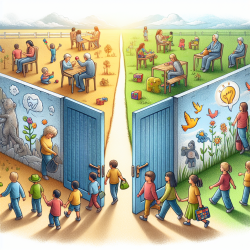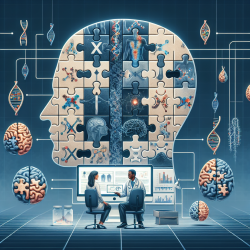Introduction to Xia-Gibbs Syndrome
Xia-Gibbs Syndrome (XGS) is a rare neurodevelopmental disorder characterized by developmental delay, hypotonia, and distinctive facial dysmorphisms. The condition is caused by pathogenic variants in the AHDC1 gene, which plays a crucial role in transcription and epigenetic regulation. Understanding the genotype-phenotype correlations in XGS is essential for practitioners working with affected children, as it can guide interventions and therapeutic approaches.
Key Findings from Recent Research
A recent study by Romano et al. (2022) provides valuable insights into the genotype-phenotype spectrum of XGS. The research identified five novel de novo pathogenic variants in the AHDC1 gene, expanding the known phenotypic spectrum of the syndrome. These findings are crucial for practitioners as they highlight the variability in clinical presentations and the importance of personalized approaches in therapy.
Implications for Practitioners
For speech-language pathologists and other practitioners, understanding the diverse presentations of XGS can enhance therapeutic outcomes. Here are some key implications from the research:
- Personalized Intervention Plans: Recognizing the variability in phenotypes allows practitioners to tailor interventions to the specific needs of each child, optimizing therapy effectiveness.
- Early Diagnosis and Intervention: Early identification of XGS can lead to timely interventions, which are critical in improving developmental outcomes.
- Interdisciplinary Collaboration: Given the complexity of XGS, collaboration with geneticists, neurologists, and other specialists is essential for comprehensive care.
Encouraging Further Research
The study by Romano et al. underscores the need for continued research into XGS. Practitioners are encouraged to contribute to research efforts by documenting clinical observations and outcomes, which can aid in refining genotype-phenotype correlations and improving therapeutic strategies.
Conclusion
Understanding the intricacies of Xia-Gibbs Syndrome is vital for practitioners aiming to deliver effective care to affected children. By integrating insights from recent research into clinical practice, practitioners can enhance therapeutic outcomes and contribute to the growing body of knowledge on this rare condition.
To read the original research paper, please follow this link: Genotype–phenotype spectrum and correlations in Xia-Gibbs syndrome: Report of five novel cases and literature review.










